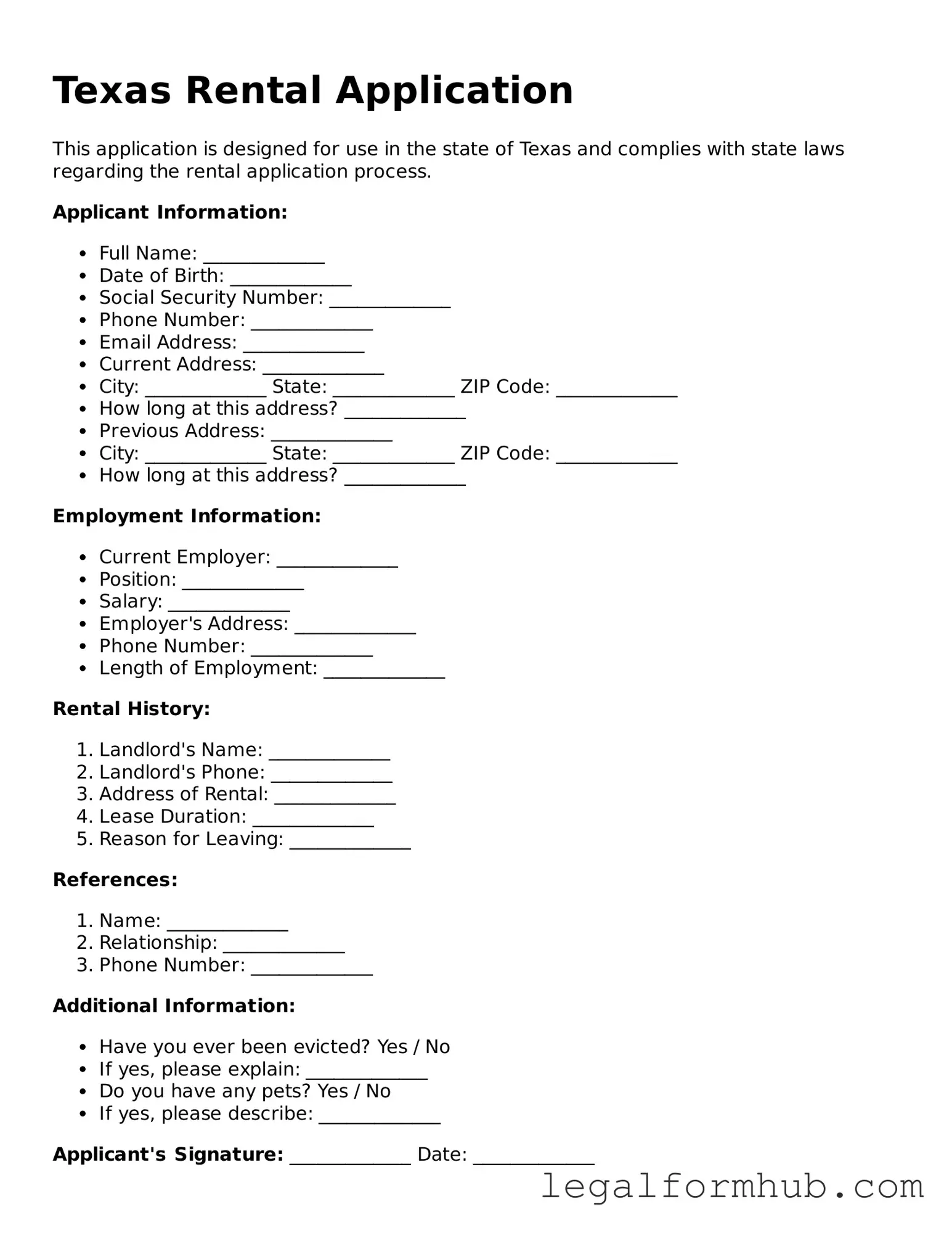Free Rental Application Template for Texas
The Texas Rental Application form is a document used by landlords to gather information from potential tenants. This form helps landlords assess the suitability of applicants for renting a property. Completing the application accurately is important for both parties to ensure a smooth rental process.
Open Rental Application Editor Here
